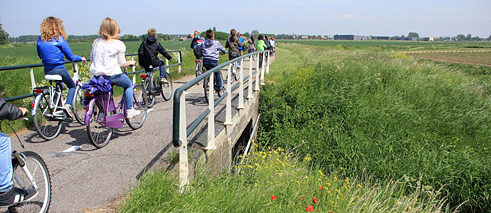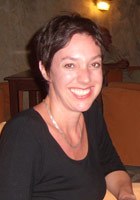Kerstin Hämmerling
Bilingual content teaching in the Netherlands

Foto: Jan Sluimer © Colourbox
TTO – a success story
The Dutch are well known for speaking good English. This is hardly surprising given that the Netherlands is a trading nation that enjoys extensive relations with its Anglo-Saxon neighbours to the west. However, schools have also played an important part in establishing an excellent basis for a command of English: nowadays, more than 33,000 pupils attend bilingual content lessons at a total of 130 Dutch schools.Bilingual teaching at Dutch schools began in 1989 when, at the request of Dutch parents, an international school in Hilversum introduced a bilingual stream for “normal” pupils (i.e. pupils at schools following a Dutch curriculum). Various other schools then followed suit over the next few years. Together, they drew up criteria for TTO (tweetalig onderwijs = bilingual education) and set these down in a TTO standard that remains in force to this day. An organization entitled “Europees Platform voor internationalisering van het Nederlandse onderwijs” was entrusted with coordinating this incipient school network. This institution, now renamed Nuffic, continues to coordinate the network on behalf of the Dutch education ministry, organizes congresses for head teachers, further training courses for teachers and projects for pupils, supports schools with funding in the initial phase and assures quality by providing certification for participating schools.
Nuffic
Standard for bilingual education
TTO in the Dutch education system
Nowadays, roughly a fifth of all secondary schools in the Netherlands offer certain subjects taught in a foreign language. With just one exception – a school in the northeast border region that offers bilingual teaching in German – English is the second language that is used in these specific subjects. To better understand the role played by TTO at Dutch schools, it is worth gaining a brief insight into the Dutch education system.Most Dutch children start primary school at the age of four, where they spend a total of eight years. English is compulsory in the final two years of primary education, which equates roughly to classes 5 and 6 at German schools in terms of pupil age. However, more than 1,150 primary schools in the Netherlands now offer English lessons to even younger pupils. This early-level foreign language instruction is targeted to children aged four, six or eight. In other words, the level at which children begin studying English at secondary schools can differ considerably.
The Dutch school system offers three levels of secondary education:
- At pre-vocational VMBO schools, pupils are taught at four different levels and prepared for vocational training or an apprenticeship over the course of four years.
- At intermediate HAVO schools, pupils can acquire a qualification after five years that entitles them to begin a course at a technical college or university of applied sciences.
- At pre-university VWO schools, pupils take final exams after six years that qualify them for university entrance.
Dutch schools receive public funding according to the number of pupils. Teachers’ salaries, lesson materials, furniture etc. are paid for out of this budget. Schools are therefore run almost like businesses and are forced to compete with one another to attract pupils.
Bilingual streams were first established at VWO schools as a way of giving academically gifted pupils a more in-depth education. Most bilingual teaching is still aimed at this target group, though these days bilingual lessons are also available to HAVO and VMBO pupils. Many head teachers see a bilingual stream as enhancing the school’s profile and making it more competitive. As far as funding is concerned, it is worth mentioning that many TTO schools ask parents to make a voluntary contribution of on average €450 per pupil per school year to cover additional expenses such as further training for teachers, school exchanges or teaching materials.
What is TTO?
Although the TTO standard signed by the schools within the network gives schools quite a lot of scope when it comes to designing their bilingual lessons, there are of course certain important criteria and conditions that have to be met before a school can officially call itself a TTO school.It is important to note that TTO schools always have normal Dutch classes alongside their bilingual streams; this means that pupils and their parents always have a choice within the school. Pupils who attend bilingual lessons in the first few years of a TTO school will in practice have at least half of their subjects taught in English. VMBO schools wishing to be classed as TTO schools have to offer at least 30 percent of subjects in English. Some schools also offer bilingual instruction (TTO) in the sixth form. However, pupils at TTO schools are ultimately required to take the Dutch final school leaving examination. At some schools, pupils in the sixth form are additionally given the necessary preparation to take an English Language and Literature examination from the International Baccalaureate (IB) programme. Furthermore, many schools offer their pupils the opportunity to take a Cambridge English language exam.
When it comes to TTO in the earlier years of secondary education, schools are in principle able to decide themselves which subjects they wish to teach in the foreign language. That said, the bilingual classes must include one subject each from the social sciences, STEM and music/art/physical education. There is no particular focus on the combination of CLIL and STEM in the Netherlands. In practice, the subjects taught in a foreign language at schools will depend specifically on which subject teachers at the school are keen to give bilingual lessons, have a good knowledge of English and are willing to take further training courses themselves.
 © Colourbox
© Colourbox
CLIL and EIO
The Dutch TTO model is based on two key elements: Content and Language Integrated Learning (CLIL), and European and International Orientation (EIO).The CLIL approach forms the basis of TTO and stresses that bilingual teaching is about a great deal more than simply teaching content in a different language: CLIL involves combining content and language teaching, and the content teacher needs not only to convey subject knowledge but also to actively foster the language skills of the learners. To do this, teachers not only require sufficient proficiency in the foreign language themselves, but should also be familiar with concepts of foreign language teaching and learning so as to be able to support pupils in their language acquisition during content lessons, too. To ensure that content teachers have a good knowledge of English, many schools offer them the chance to attend Cambridge English courses and examinations. In addition, there is a broad range of CLIL courses available to content teachers in the Netherlands nowadays. Although undergoing CLIL training is time-consuming and costly, many TTO schools believe that it is a worthwhile investment in professionalization. After all, an interactive and communication-oriented CLIL approach not only bears fruit in the bilingual classes but can also be applied in standard Dutch content lessons.
The second key basis for TTO in the Netherlands is the European and International Orientation, or EIO for short. From the outset, bilingual schools were keen to expand the horizons of their pupils internationally, and to teach them to become responsible citizens of the world. English as a lingua franca was one important instrument in this context. Today, EIO is firmly anchored in the TTO curriculum in two ways: for one thing, all subjects are given an international orientation, e.g. by incorporating current global events or organizing interdisciplinary projects. And for another, international cooperation forms part of the curriculum: all TTO pupils must take part in a cooperation project with twinned schools abroad at least once during their time at school. Communication can also take place via digital means. However, many schools expand their online contact with twinned schools abroad over the years, eventually establishing school exchanges lasting several days. For many TTO pupils, this is precisely where the added value of bilingual education comes into play: encounters with peers from other cultures and the experiences they have together often make for unforgettable impressions.
Incidentally, the Common European Framework for Europe Competence (CFEC) is one of the ways used to record pupil learning progress, as well as the development of their international and intercultural skills. The CFEC, which is similar to the well-known Common European Framework of Reference for Languages, was developed by schools in the international ELOS network and helps teachers and learners to classify their teaching materials, activities and competences.
CFEC
The TTO network
Today, the TTO network comprises head teachers, teachers and what are known as TTO coordinators from more than 130 secondary schools. The network is coordinated by Nuffic, the national agency for internationalization at schools and universities in the Netherlands. The network’s goal is to share experiences, best practice and materials. To this end, network meetings, congresses and conferences are regularly held. The network also organizes various pupil projects, such as a Junior Speaking Contest, a Cricket Challenge, a Team Mathematics Challenge, a Debating Competition and a Drama Contest. Taking part in competitions such as these gives learners the opportunity to put their English to use in a playful manner and to compete with one another.Participants in the network also benefit above all from the fact that teaching materials for bilingual content lessons are developed jointly and shared. Although some Dutch school book publishers now offer textbooks for some bilingual subjects, most teachers still create their own materials for bilingual content teaching or draw on the available range of authentic English-language lesson materials. It is still a challenge to find suitable material that presents high-level subject content at a less demanding level of language. To relieve the burden on teachers when it comes to finding and creating appropriate teaching materials, especially in the first few years, head teachers could for example free them from their teaching duties for a few hours per month so that the time they spend on such lesson preparation would actually be remunerated.
Descriptions of and excerpts from textbooks for bilingual content teaching in various subjects can be found on the websites of the publishers OVD, Malmberg and Thieme-Meulenhoff.
ODV
Malmberg
Thieme-Meulenhoff
Quality assurance
As already described above, the TTO schools already jointly defined a quality assurance standard in the 1990s – one that still applies to this day. Since 2009, there has additionally been a special standard for TTO in preparatory vocational education.The criteria laid down in the general TTO standard include the following:
- Before entering the sixth form, pupils must have a command of English at B1 (HAVO) or B2 (VWO) level.
- Their final exam marks in all subjects must not be lower than the national average.
- English must be the active language used for at least 50 percent of lesson time.
- There must be at least one native English speaker on the TTO’s teaching staff.
- Dutch teachers who teach in English must themselves have at least B2 command of the language in accordance with the Framework of Reference.
- All pupils must be offered the opportunity to take part in international cooperation projects.
- Both the content teachers and the English teachers must use the CLIL approach so as to foster the content and foreign language skills of the pupils.
A school can only designate itself a “TTO school” once all the criteria laid down in the standard are met. This is confirmed by a certificate. An external committee checks compliance with the quality criteria not only at the time of certification, but also at regular multi-year intervals thereafter.
TTO-Standard
Outlook
Without doubt, the bottom-up introduction of bilingual content teaching at secondary schools is one of the most successful educational reforms in the Netherlands. Roughly a fifth of all schools currently offer a bilingual stream. However, because demand remains constant, attempts are also to be made in the next few years to further expand the number of schools offering bilingual teaching. The goal is to provide such teaching at all educational levels throughout the country so that pupils at any school can choose to attend a bilingual stream if they so wish. To facilitate this, the TTO standard is to be modified so that schools have more freedom in how they set up their TTO teaching in future.TTO Duits – best practice with content taught in German
Despite many schools in border regions showing growing interest in German, there is at present only one Dutch school that offers bilingual teaching in German. The CSG Rehoboth, a small VMBO/HAVO school in the northeast border region of the Netherlands, decided to introduce this concept in 2009. This was mainly for social economic reasons: this sparsely populated area has been battling for many years with a shortage of apprenticeship places and jobs. For youngsters to have better chances on the employment market, and to allow them to seek work on the other side of the border in Germany, a good command of German is essential alongside the requisite technical knowledge.In their first year at the school, all pupils in the MAVO stream (representing the highest level of pre-vocational secondary education) take part in various projects and excursions in the subject of German. At this stage they are approx. 12 years old. At the end of this school year, they have to decide whether to embark on the bilingual path in the second and third years. If so, they will take various subjects in German, take part in exchange programmes lasting several days plus an internship week in Germany, and will ultimately leave school with an A2 or B1 language certificate.
More information can be found in the English-language publication “Bilingual education in Dutch schools: a success story”.
„Bilingual education in Dutch schools: a success story“
Sources:
- „Onderwijsvernieuwing van onderop: tweetalig onderwijs in Nederland“
Onno van Wilgenburg - “Bilingual education in Dutch schools: a success story”
Brief biography:
 © Jaap Kuipers
Kerstin Hämmerling works as a teaching expert at the Goethe-Institut Boston. Previously she lived for 15 years in the Netherlands, where she initially taught English and German at a secondary school. After a career change which saw her join the Europees Platform (today: Nuffic), she supported schools with additional German teaching. In recent years she has coordinated the education department at the Duitsland Instituut Amsterdam (DIA).
© Jaap Kuipers
Kerstin Hämmerling works as a teaching expert at the Goethe-Institut Boston. Previously she lived for 15 years in the Netherlands, where she initially taught English and German at a secondary school. After a career change which saw her join the Europees Platform (today: Nuffic), she supported schools with additional German teaching. In recent years she has coordinated the education department at the Duitsland Instituut Amsterdam (DIA).
E-Mail: kerstin.haemmerling@goethe.de